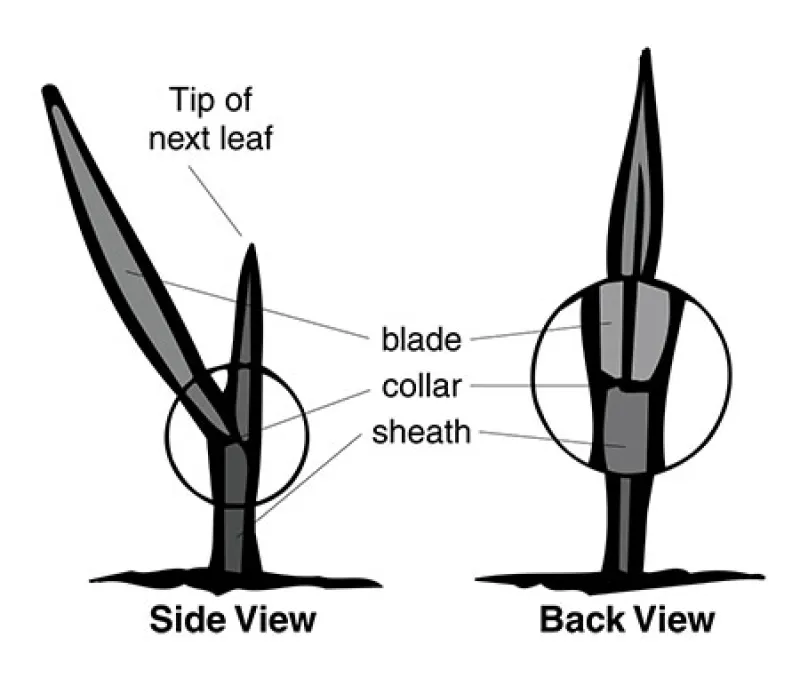Recommendations for postemergence-applied herbicides include leaf stages of crops and weeds to describe the optimum treatment time. Achieving maximum weed control while minimizing crop injury requires proper timing of herbicide applications.
The drawings in this publication illustrate wheat growth stages but also represent any cereal or annual grassy weed. Weed control recommendations made annually by North Dakota State University in Extension publication W253, “North Dakota Weed Control Guide,” use this method of describing growth stages. The numbering on the drawings represents the following: 1 = first leaf on the main stem, 2 = second leaf on the main stem, (etc.), and T = tiller (not counted as a leaf when determining leaf stages).
The plant leaf stage is determined by the number of leaves present on the main stem. Leaves arise on opposite sides of the stem and develop a collar at the junction of the leaf sheath and the leaf blade.
Small grains should be positioned with the first leaf pointing to the left. The first leaf has a blunt tip. When positioned correctly, all leaves on the left side of the main stem are designated with an odd number and on the right side with an even number.
Count the youngest leaf when it is at least one-half the length of the leaf below it. For example, a plant with two fully expanded leaves with the third leaf approximately one-half the length of the second leaf is staged as a three-leaf grass plant. Follow this procedure to determine the proper growth stage of grass plants.
Tillers (stooling) usually start to appear at the third- to fifth-leaf stage. Most tillers arise between the main axis (stem) and leaf. A coleoptilar tiller also may be present. The coleoptilar tiller originates below the soil (near the seed) and is on the opposite side of the stem from the first leaf.
Frequently, tiller leaves are confused with the leaves of the main stem when determining the leaf stage. Remember to count the leaves on the main stem, but do not include tiller leaves in the leaf stage count.
Leaf stage determination in the field often is complicated by the loss of some of the older leaves; for example, the first and second leaves may have been removed from the plant by abrasion from wind-blown soil, frost, disease or some other form of weathering. The base of the stem should be examined carefully for evidence of scars from lower leaves that may have been removed. Such leaves must be counted when making a leaf stage determination.
Plant growth rates varies considerably, and the approximate days after emergence for a given leaf stage to appear is influenced most by temperature. Daytime highs less than 55 F delay development, while daytime highs greater than 75 F advance development. Days to emergence can vary greatly, depending on soil temperature and moisture.
Refer to the small-grain section of the current “North Dakota Weed Control Guide” for an illustration of postemergence herbicide application timing to spring wheat, durum and barley.



